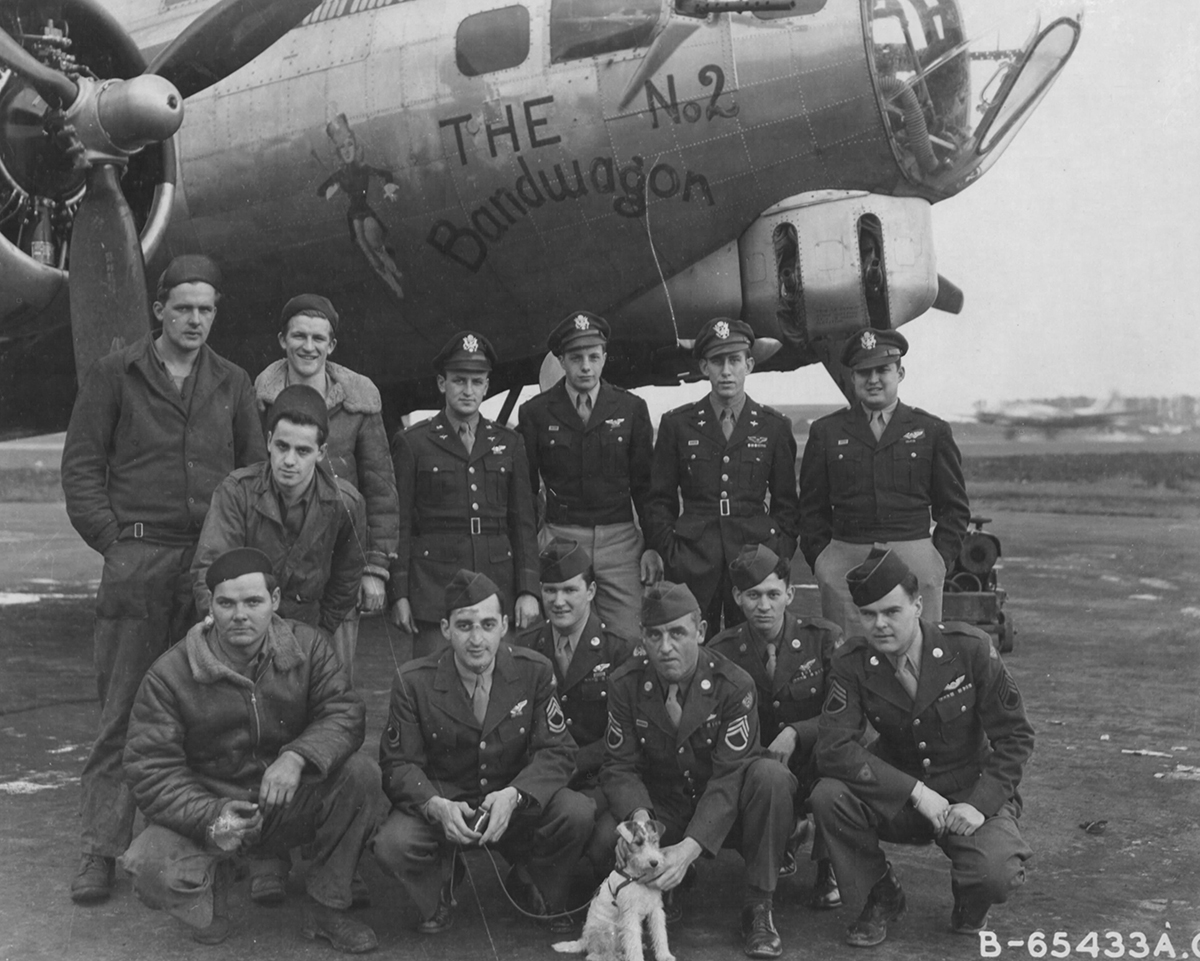
44-6113 / The No. 2 Bandwagon aka Mrs. Wing Ding
Delivered Tulsa 6/5/44; Hunter 14/5/44; Dow Fd 23/5/44; Assigned 613BS/401BG [IN-R] Deenethorpe 2/6/44; battle damaged Ingoldstadt 5/4/45 with ?; force landed continent, Salvaged. NO. 2 BANDWAGON.
 English
English Deutsch
DeutschThe B-17G was the latst production model of the “Flying Fortress” and was manufactured in the greates numbers.
![B-17G mit Kinnturm // Wikipedia Commons [Public Domain]](https://b17flyingfortress.de/cms/wp-content/uploads/2015/12/B-17G_Nose_in_Detail-762x1024.jpg)
B-17G mit Kinnturm // Wikipedia Commons [Public Domain]
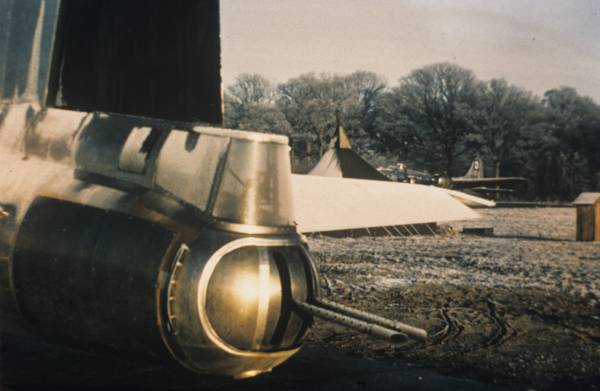
Chenyenne-Turret // http://www.americanairmuseum.com/media/4381 // CC-BY-NC 3.0
However, the new model B-17 also experienced its own operating difficulties. When fired at maximum elevation, the chin turret guns had a tendency to crack the plexiglass nose; a problem was solved by fitting blast barrels to each gun. The oil cooler regulator often failed to operate and could result in complete engine seizure. The ability to feather the propeller blades, in event of engine failture, was lost in the B-17G because the standpipe that held back sufficient oil to work the feathering tank was sacrificed in the quest for a lighter aircraft. This was a major design error and meant that, by the winter of 1943, the lack of feathering was a major reason for bomber loss. Urgent request were made by Groups for special modifications kits but it was only in September 1944 that B-17G’s arrived with these modifications built-in.
Another serious problem on the B-17G was the lack of an engine fire extinguisher system. Designers had believed that it was ineffective so had left it out of the new model. In reality, the system had worked well and it was requested by Bomber Groups that it be re-introduced as soon as possible.
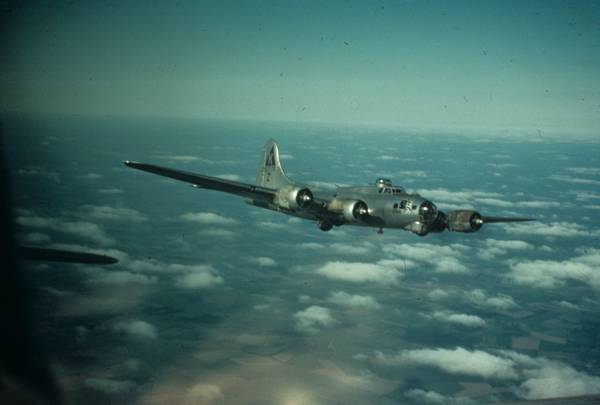
B-17G im Flug // http://www.americanairmuseum.com/media/2433 // CC-BY-NC 3.0
The B-17G was still tail heavy with the same centre of gravity problems as earlier models. However, by May 1944, when long-range fighter esort was effective defensive protection, gunners were not as busy as before and it was decided that one waist gunner be dispensed with. The radio romm gun, the least used in action, was got also rid of and the quanity of ammunition carried reduced. All these measures brought the centre of gravity nearer th a more acceptable position. In the las month of the war, when there was little enemy fighter activity, some Combat Wings flew without waist guns, ball turrets or chin turrets. Operational reports revealed an estimated 25mph increase in airspeed with the improved streamlining. In this period of the war flak batteries were a greater hazard than fighters and unneccesary gunner armor plate was removed to be replaced with laminated steel and canvas plates called “flak curtains”.
In total, the 8th Air Force received 6,500 B-17G’s. In March 1945, it could send 2,370 of them into combat operations. At the end of the war a total 1,301 B-17G’s had been shot down or reported missing in action.

Delivered Tulsa 6/5/44; Hunter 14/5/44; Dow Fd 23/5/44; Assigned 613BS/401BG [IN-R] Deenethorpe 2/6/44; battle damaged Ingoldstadt 5/4/45 with ?; force landed continent, Salvaged. NO. 2 BANDWAGON.
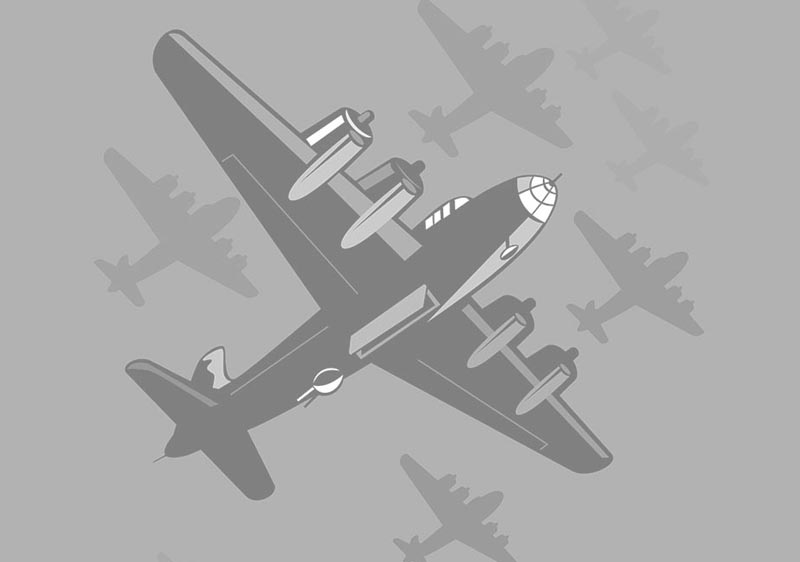
Delivered Cheyenne 18/1/44; MacDill 23/1/44; Grenier 5/2/44; Assigned 418BS/100BG [LD-B] Thorpe Abbotts 28/2/44; Missing in Action Weisbaden 10/11/44 with John Lundquist, Willis Dickerman, Don Meston, Irving Wells, John Williamson, Jack Moore, Jim Raynor, Ivan Hunter (8 Prisoner of War); Jim Goss (Killed in Action); flak, crashed Weisbaden, Ger. Missing Air Crew Report 10356. SACK ARTIST (npo).

Delivered Denver 19/9/43; Scott 2/10/43; ass 509BS/351BG [RQ-N] Polebrook 24/10/43; MIA {15m} Oberpfaffenhofen 18/3/44 Pilot: Walter Illies, Co-Pilot: John Breland, Engineer / Top Turret Gunner: Bob Vaughn, Radio Operator: Alby Jacques, Ball Turret Gunner: Art Briggs, Waist Gunner: Bob Alexander (6KIA); Navigator: Rich Perle{wia}, Bombardier: Bob Casper, Waist Gunner: Bill Brown, Tail Gunner: Merle Thompson{wia} (4POW); flak, crashed Erbstetten, 19 miles W of Ulm, Germany. MACR 3237. CASA DE EMBRIAGOS.

Delivered Alexandra 24/5/44; 221 BU Alexandra 17/1/45; 329 BU Alexandra 1/3/45; 325 BU Avon Park 29/6/45; Reconstruction Finance Corporation (sold for scrap metal in USA) Walnut Ridge 20/8/45.

Delivered Long Beach 11/11/43; on trial fitted with TV camera and GB-4 glide bomb facilities (Batty) Orlando 22/11/43; 901 BU Pinecastle 2/6/44; 903 BU Pinecastle 10/9/43; 902 BU Orlando 3/10/44; 903 BU Pinecastle 25/11/44; 621 BU Pinecastle 9/7/46.

Delivered Louisville 29/4/45; Syracuse 1/6/45; Middletown 8/11/45; with George Jacobi force landed Olmstead, PA 8/1/46; Morrison 17/1/46; West Palm Beach 2/1/47; 2621 BU Barksdale 26/3/47; re-ass 31/3/47; 4117 BU Robins 4/3/48; recl Comp 14/9/48.

Delivered Cheyenne 27/8/44; Patterson 10/9/44; Hunter 30/9/44; Dow Fd 15/10/44; Assigned 305BG Chelveston 5/12/44; transferred 351BG Polebrook 23/5/45; Returned to the USA Bradley 12/6/45; 4168 Base Unit, South Plains, Texas 18/6/45; Reconstruction Finance Corporation (sold for scrap metal in USA) Kingman 25/11/45.

Delivered Dallas 25/6/44; Langley 26/7/44; Dow Fd 23/8/44; Assigned 359BS/303BG [BN-Z] Molesworth 25/8/44; transferred 751BS/457BG [F] Glatton 15/9/44; Missing in Action Politz 7/10/44 with Gumm; Capt Vinton Mays (Killed in Action); 305BG Chelveston 23/5/45; Salvaged 9AF Germany 10/5/46.
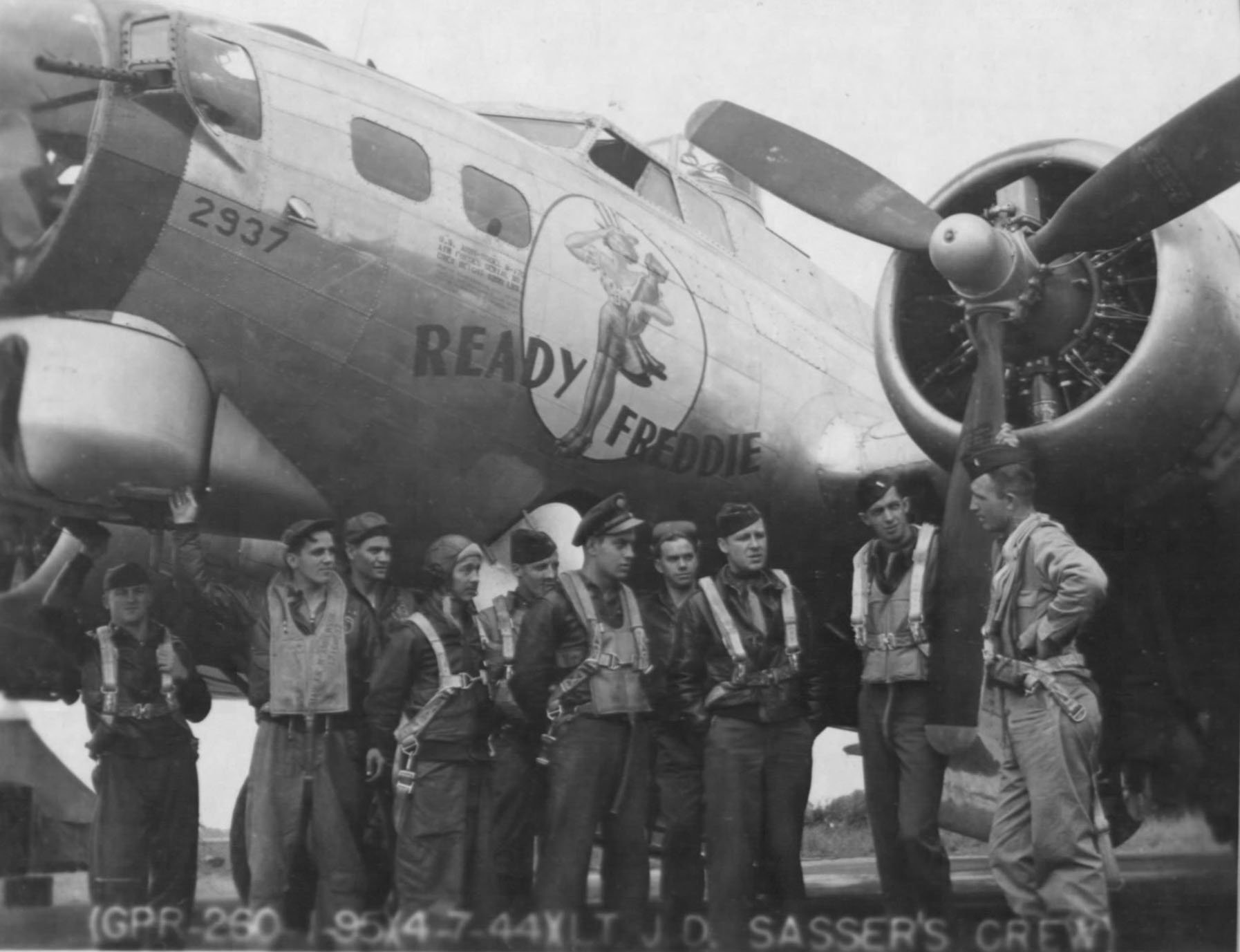
Delivered Cheyenne 20/4/44; Kearney 16/5/44; Grenier 27/5/44; Assigned to the 412th Bomb Squadron/95th Bomb Group as [QW-E]. Based at Horham 30/5/44; non-operation crash, pilot given permission to land at Duxford airfield, UK 19/7/44, to pick up others. When pilot buzzed tower but clipped a warning beacon, it rolled over on its back and hit an 83rd Fighter Squadron barrack; with Jim Sasser, Co-pilot: Vic Mintz, Flight engineer/top turret gunner: Francis Bradburn, Radio Operator: Jim Heil; the rest were 78th Fighter Group personnel; Lt Martin Smith, Lt John Putnam, ncos-Wilbur Edwards, Don French, John Gorman, John Hamilton, Tony Loguidice, Ellsworth Seecz, Frank Wojicki, Ernie Taylor (total 14 men Killed in Service); ncos-Ray Robertson, Oscar Severson (2 Wounded In Service); Salvaged 21/7/44. READY FREDDIE.

Delivered Cheyenne 3/8/44; Hunter 12/8/44; Grenier 7/9/44; Assigned 326BS/92BG [JW-Z] Podington 9/9/44; Returned to the USA Bradley 28/6/45; 4168 Base Unit, South Plains, Texas 30/6/45; Reconstruction Finance Corporation (sold for scrap metal in USA) Kingman 10/12/45.
Search for B-17
Supporting
Do you like this website about the B-17 Flying Fortress? I could help you find the information you are looking for? I would be very pleased if you would support my work with PayPal Me!
B-17 Store by teespring
Masters of the Air
 Buy on Amazon*
Buy on Amazon*
* = CommissionsEarned. As an Amazon Associate I earn from qualifying purchases.
Recent Comments
Information